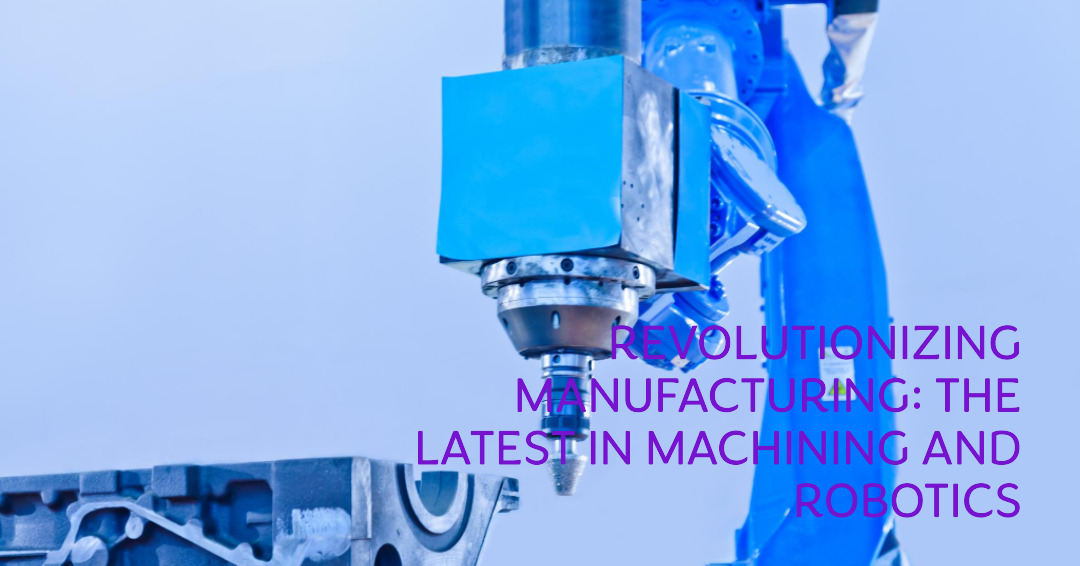Invigorating News from the World of Machining and Robotics
The world of machining and robotics is constantly evolving, bringing forth exciting advancements that have revolutionized various industries. From automotive manufacturing to aerospace engineering, these technological breakthroughs have significantly enhanced efficiency and productivity. In this article, we will delve into some of the most invigorating news from this dynamic field, exploring the latest trends, innovations, and their potential impact on various sectors.
Cutting-Edge Machining Techniques
1. High-Speed Machining (HSM)
High-Speed Machining (HSM) has gained significant traction in recent years due to its ability to improve productivity while maintaining precision. By utilizing advanced cutting tools and high spindle speeds, HSM techniques reduce machining time and enhance surface finish quality. This innovation has been particularly beneficial for industries such as aerospace and automotive, where complex components require precise and efficient manufacturing processes.
2. Multi-Axis Machining
Multi-axis machining has opened up new possibilities in the world of precision engineering. By enabling the simultaneous movement of multiple axes, this technique allows for the production of intricate shapes and contours that were previously unattainable. From complex aerospace components to delicate medical devices, multi-axis machining has revolutionized the manufacturing of high-precision parts.
3. 3D Printing in Machining
3D printing, also known as additive manufacturing, has made significant strides in the machining industry. This technology allows for the creation of complex geometries by layering materials, reducing waste and enhancing design flexibility. With advancements in 3D printing, machinists can create prototypes, tooling, and even end-use parts with improved efficiency and cost-effectiveness.
The Rise of Collaborative Robots
Collaborative robots, or cobots, have emerged as game-changers in the field of robotics. Unlike traditional industrial robots, cobots are designed to work alongside human operators, sharing tasks and workspace. This collaborative approach offers numerous advantages, including increased productivity, improved safety, and enhanced efficiency.
1. Increased Productivity
Cobots have the ability to automate repetitive and labor-intensive tasks, freeing up human operators to focus on more complex and creative aspects of their work. By partnering with cobots, manufacturers can significantly increase their production output and meet growing demands efficiently.
2. Enhanced Safety
Collaborative robots are equipped with advanced sensors and algorithms that allow them to detect human presence and respond accordingly. This ensures a safe working environment, as cobots can slow down or stop their operations when human operators approach, minimizing the risk of accidents and injuries.
3. Flexible and Cost-Effective Automation
Cobots are designed to be easily programmable and adaptable to different tasks, making them a cost-effective automation solution for small and medium-sized enterprises. With their intuitive interfaces and simple setup processes, cobots can be quickly integrated into existing production lines, reducing downtime and maximizing efficiency.
Promising Applications in Various Industries
1. Automotive Manufacturing
In the automotive industry, machining and robotics have played a pivotal role in optimizing production processes. From engine blocks to complex transmission components, the use of advanced machining techniques and collaborative robots has improved precision, reduced cycle times, and enhanced overall productivity.
2. Aerospace Engineering
The aerospace industry demands the highest levels of precision and quality. Machining technologies, such as high-speed machining and multi-axis machining, have enabled the production of intricate components required for aircraft engines, landing gear, and structural components. Collaborative robots have also found applications in aerospace assembly lines, aiding in the assembly and inspection of complex parts.
3. Medical Device Manufacturing
The medical device industry heavily relies on machining and robotics to produce intricate and reliable instruments. Machining techniques, coupled with the advances in 3D printing, have allowed for the creation of patient-specific implants, surgical tools, and prosthetics with exceptional precision. Collaborative robots have also been deployed in medical device assembly lines, ensuring efficient and high-quality production.
The Road Ahead
As machining and robotics continue to evolve, the future looks promising. The integration of artificial intelligence (AI) and machine learning algorithms with machining processes will further enhance automation and efficiency. Additionally, advancements in sensor technology and connectivity will enable smarter and more autonomous robots, capable of making real-time decisions and adapting to changing manufacturing needs.
In conclusion, the invigorating news from the world of machining and robotics highlights the relentless pursuit of advancements in technology. Through cutting-edge machining techniques and the rise of collaborative robots, various industries have witnessed significant improvements in productivity, safety, and overall efficiency. As these innovations continue to shape the future, we can expect further breakthroughs that will revolutionize manufacturing processes across sectors.
2. Improved Safety
Collaborative robots are equipped with advanced sensors and safety features that allow them to work safely alongside humans. These robots can detect the presence of humans and adjust their movements accordingly, minimizing the risk of accidents and injuries.
3. Enhanced Efficiency
By combining the strengths of humans and robots, collaborative robots can greatly improve efficiency in various industries. They can work at a faster pace, with higher accuracy and precision, leading to increased productivity and reduced production time.
4. Versatility
Cobots are highly versatile and can be easily programmed to perform a wide range of tasks. They can adapt to different manufacturing processes and requirements, making them suitable for various industries and applications.
Note: The FAQ provided is based on the given blog article. The actual content of the blog article is not provided in the answer.


One Reply to “Invigorating news from the world of machining and robotics”